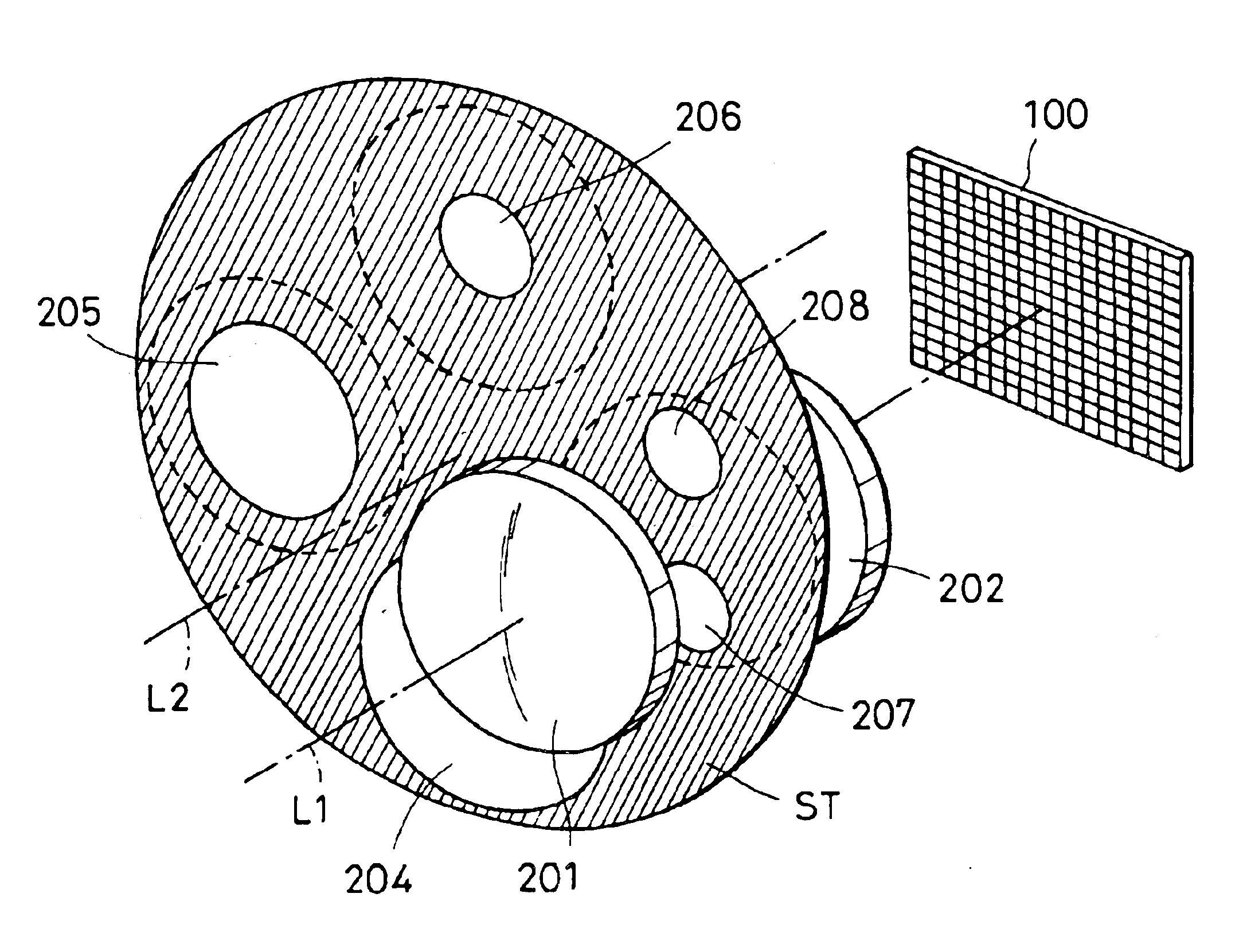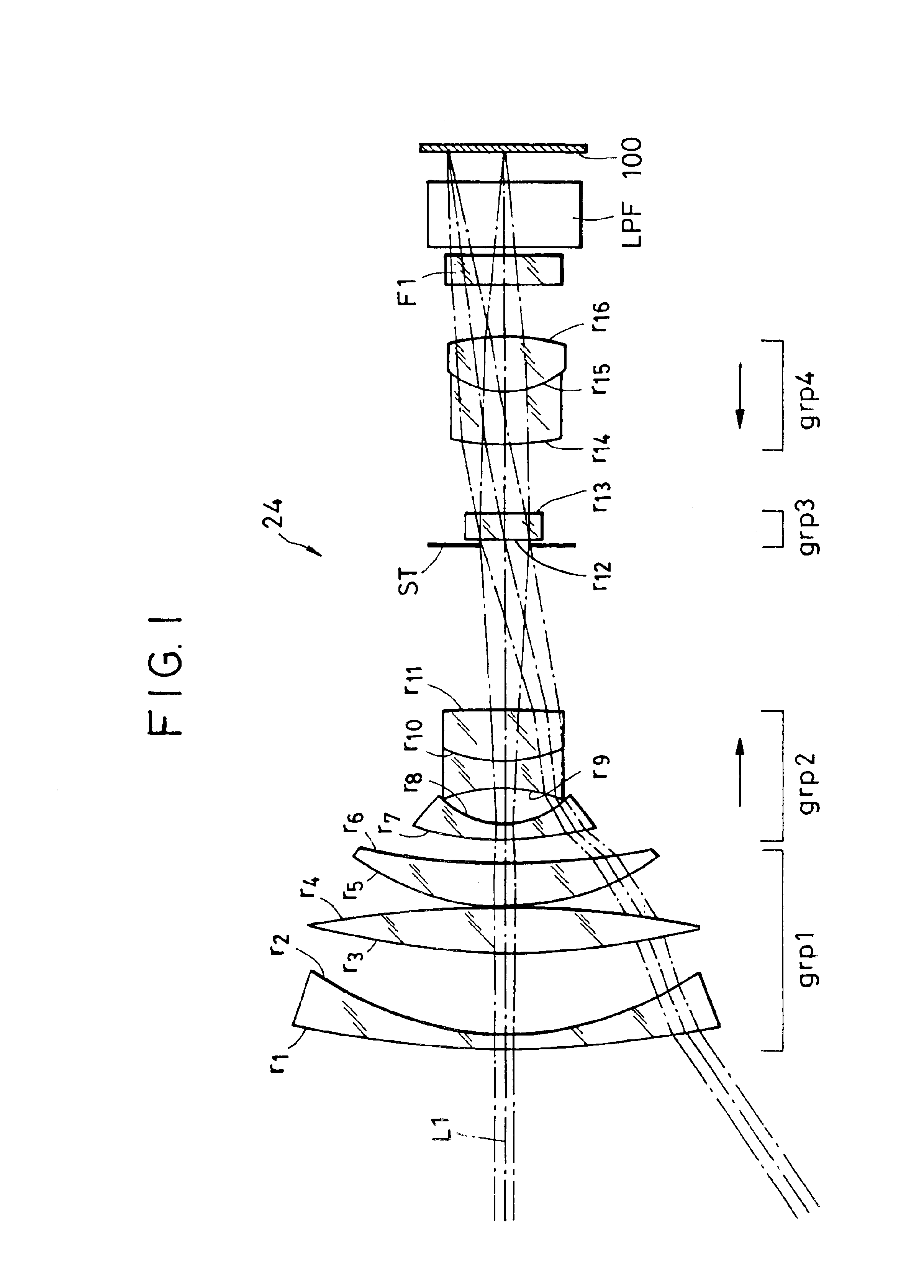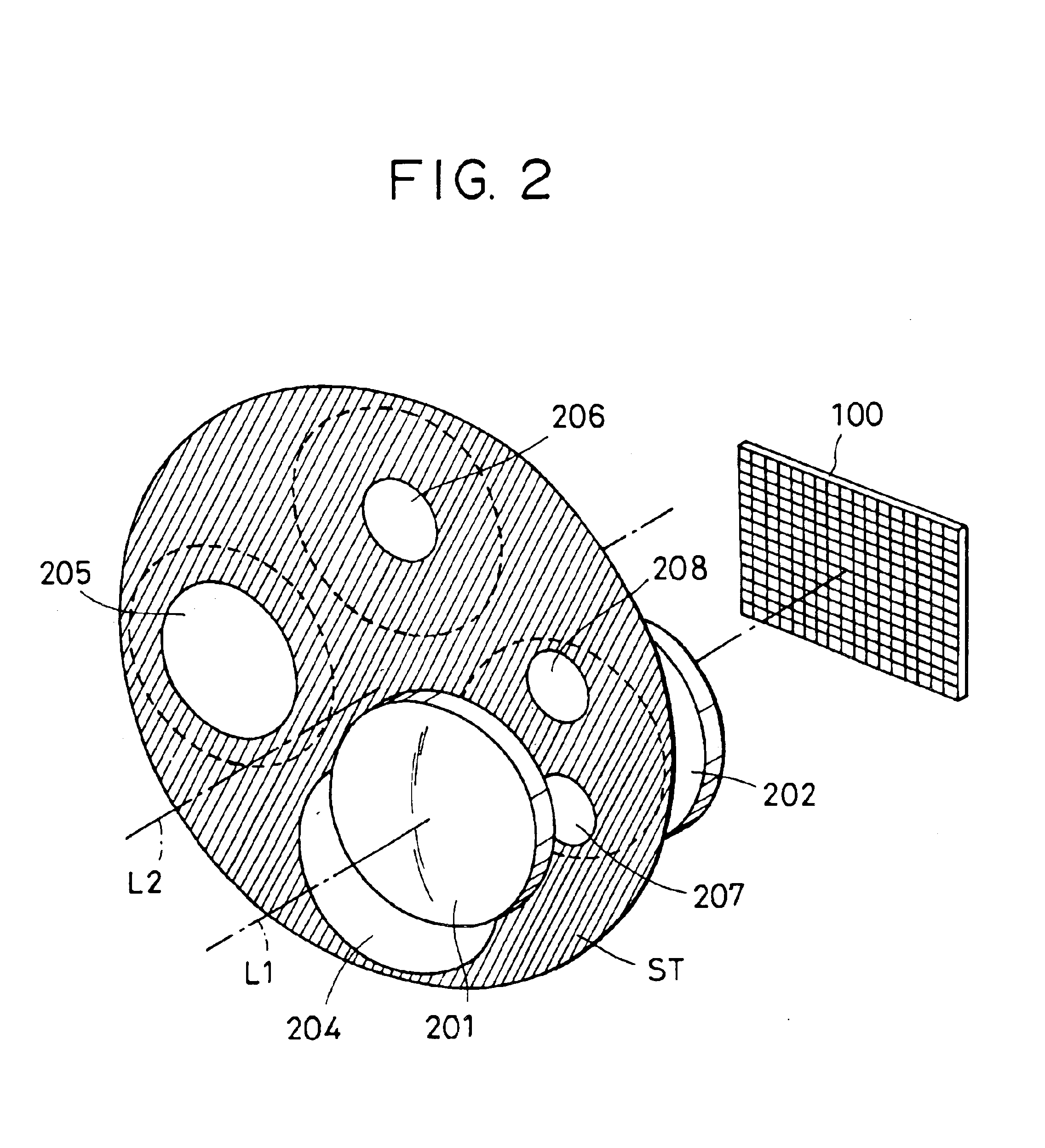Focus detecting device with photoelectric conversion portion having microlens and with light blocking portion having first and second openings
a technology of microlenses and detecting devices, which is applied in the direction of distance measurement, exposure control, instruments, etc., can solve the problems of detecting a large-defocus condition, affecting the detection accuracy of the microlense, and affecting the quality of the microlenses
- Summary
- Abstract
- Description
- Claims
- Application Information
AI Technical Summary
Problems solved by technology
Method used
Image
Examples
first embodiment
[First Embodiment]
[0059]First of all, a description will be given hereinbelow of an image pickup optical system for use in a first embodiment of the invention.
[0060]FIG. 1 is an illustration of a construction of an image pickup optical system according to the invention, showing a zoom optical system of a digital color camera using a solid-state image pickup element. In this illustration, the left side shows a subject side while the right side illustrates an image plane side.
[0061]In the illustration, the image pickup optical system, designated generally at reference numeral 24, is made up of a positive first group (grp1) comprising a negative lens having lens surfaces r1 and r2, a positive lens having lens surfaces r3 and r4 and a positive lens having lens surfaces r5 and r6, a negative second group (grp2) comprising negative and positive lenses having lens surfaces r9, r10 and r11, a diaphragm ST, a positive third group (grp3) comprising a positive lens having lens surfaces r12 and...
second embodiment
[Second Embodiment]
[0175]FIG. 30 shows an image pickup unit according to a second embodiment of the present invention. In the illustration, reference mark ST1 represents a first diaphragm and reference mark ST2 designates a second diaphragm rotatable coaxially with the first diaphragm ST1. The first diaphragm ST1 excludes the large-defocus detection openings 207 and 208 from the diaphragm ST according to the first embodiment shown in FIG. 28. The first and second diaphragms ST1 and ST2 are disposed in a state adjacent to each other. The first and second diaphragms ST1 and ST2 are driven by a motor (not shown) to take three or four positions.
[0176]In FIG. 30, numeral 201 designates, of an image pickup optical system 24, a front lens group collectively representing a first group (grp1) and a second group (grp2) existing on the object side with respect to the diaphragms ST1 and ST2, numeral 202 represents, of the image pickup optical system 24, a rear lens group collectively representi...
PUM
 Login to View More
Login to View More Abstract
Description
Claims
Application Information
 Login to View More
Login to View More - R&D
- Intellectual Property
- Life Sciences
- Materials
- Tech Scout
- Unparalleled Data Quality
- Higher Quality Content
- 60% Fewer Hallucinations
Browse by: Latest US Patents, China's latest patents, Technical Efficacy Thesaurus, Application Domain, Technology Topic, Popular Technical Reports.
© 2025 PatSnap. All rights reserved.Legal|Privacy policy|Modern Slavery Act Transparency Statement|Sitemap|About US| Contact US: help@patsnap.com



